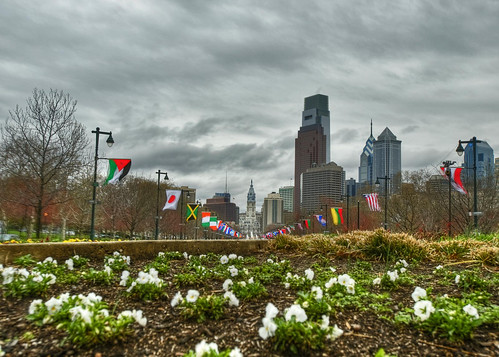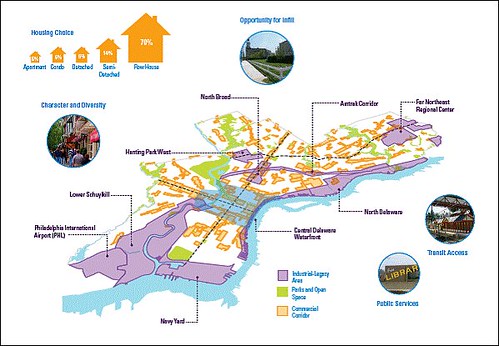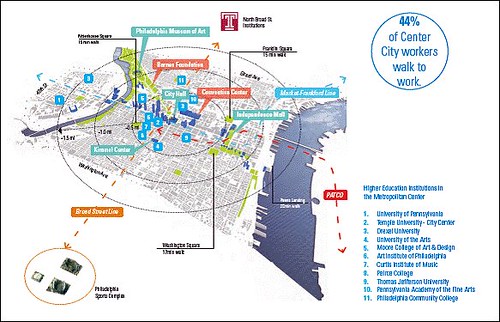Philadelphia plan aims high for vitality, resilience

Posted September 16, 2011 at 1:31PM
Philadelphia2035 is an ambitious, comprehensive planning and zoning process designed to position the city's built environment to support a more vital and resilient future. At the end of this post is a really fun video introducing the process, but first the context:
Earlier this year, the city adopted the first key phase of the plan, a "Citywide Vision" that stresses such important topics as efficient transportation and connectivity, parks and open space, diverse and authentic neighborhoods, and taking advantage of legacy industrial areas ripe for redevelopment. Among the city's many assets for a bright future are being at the heart of the world's eighth largest regional economy; having the largest city park system in the eastern US; and having an ample supply of city land to support growth without further sprawl. The city is also considered among the nation's most walkable, largely because of a highly connected, tight grid of streets.
From the Citywide Vision on land use:
"Between 2010 and 2035, Philadelphia will see demand for new development based on population and employment growth. The city is expected to gain new residents and businesses while continuing to meet the changing land use needs of the current 1.53 million residents. It is estimated that nearly 7,000 acres will be needed to accommodate the housing, commerce and industry growth forecasted for the next 25 years.
"Understanding the City’s underutilized land resources, susceptibility to change, and suitability for new uses, the [Planning Commission] confirmed three assumptions: 1) There is sufficient land in the city to accommodate current and future uses; 2) The bulk of available land is located in the city core, within and adjacent to former industrial uses; and 3) Even with a healthy pace of development, more than 2,000 acres will remain underutilized in 2035 for lack of demand. It will be important to stabilize these areas so they will be ready to accommodate development beyond 2035."
The next step will be the construction over five years of 18 district plans to implement the Citywide Vision.
The comprehensive planning process builds upon some innovative and ambitious steps already taken to position the city for sustainability. Most dramatically, Philadelphia is becoming a national leader in managing rainwater to reduce runoff pollution. Under a formal plan approved in June of this year, the city has now agreed to transform one-third of the impervious areas (mostly pavement and rooftops) served by its sewer system into “greened acres” -- spaces that use green infrastructure that incorporates or mimics natural processes to infiltrate, or otherwise collect, the first inch of runoff from any storm.
That amounts to keeping 80-90 percent of annual rainfall from these areas out of the city’s over-burdened sewer system. (See this summary from my colleague Larry Levine, who has been assisting the city in the effort.) One way that the city has already begun to do this is by converting small, paved but unused neighborhood parcels into 500 acres of new neighborhood parks.
Philadelphia's planners also get it about land use and health:
"Ask yourself this:
- Do you live within walking distance of a supermarket or other source of healthy food?
- Is there somewhere near your home for children to run around, or for seniors to stay active?
- Is it possible for you to reach your job, run errands or access services without a car?
"If your answer to any of these questions is ‘no’, then you’re less likely to be eating healthy foods and achieving recommended levels of daily physical activity. In other words, your built environment – the streets, sidewalks, parks, and other manmade elements of your neighborhood – limits your ability to lead a healthy lifestyle.
"As a citywide blueprint for the built environment, Philadelphia2035 shapes policies, development, and infrastructure that have profound impacts on health. By planning ahead and making smart decisions about zoning, we can build a city that supports healthy living."
You can find lots and lots more detail from the comprehensive planning process by following the links on its home page. Whether or not you have that much time and interest, though, this short video introduction is really engaging and well-edited:
Move your cursor over the images for credit information.


